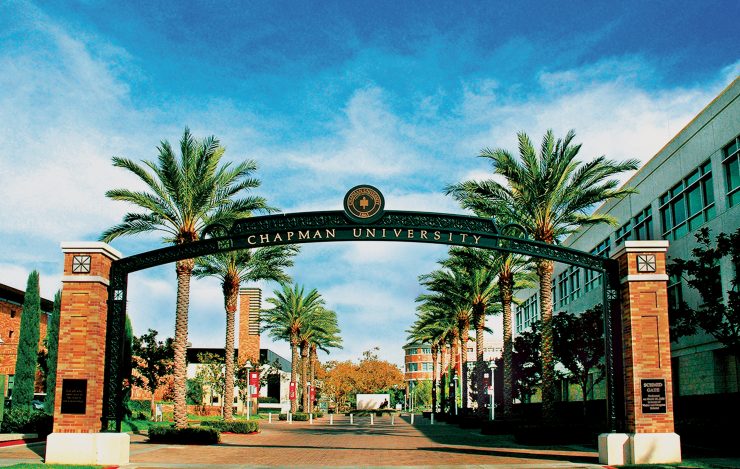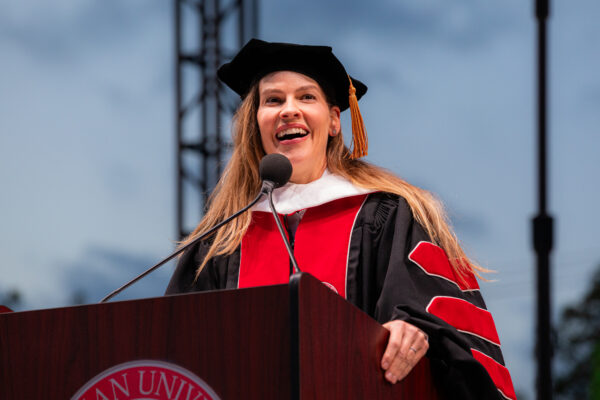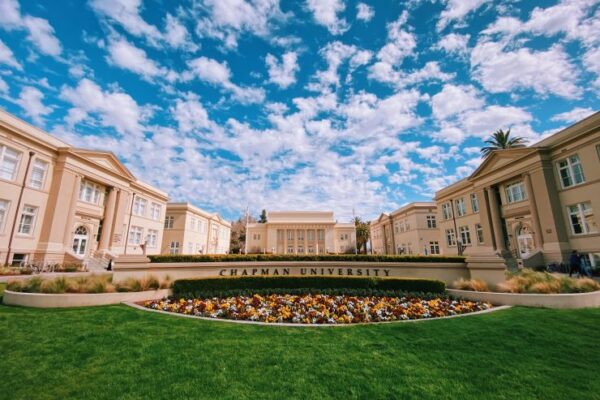A Chapman University scientist and his colleagues have determined how the Earth responds as it heats up due to climate change.
The scientists say a warming world calls for a new approach in detecting how much carbon dioxide comes out of ecosystems when the temperature changes — which tells us how well plants and soil can alleviate damage by removing carbon pollution from the atmosphere. The study is the first to find the temperature-carbon dioxide release relationship at the landscape level.
Their findings are published in the prestigious academic peer-reviewed journal Nature Ecology & Evolution.
Plants that currently take up a quarter to a third of humanity’s carbon emissions might not be able to maintain the rate of carbon dioxide removal, says Joshua Fisher, a climate scientist and associate professor of environmental science and policy at Chapman University’s Schmid College of Science and Technology.
“A big unknown in the future of the Earth is how ecosystems will respond to increasing temperature,” says Fisher. “Our findings give us insight into the fate of the planet, and how we can measure those changes at large scales.”
Recent developments, including those by Fisher, have led to the use of satellites to monitor global photosynthetic activity and measure the concentrations of gas in plants and ground soil; but, similar tools have been unable to track respiration, or the “breathing” out of carbon dioxide, across biomes and continents. Respiration continues to be indirectly estimated as the difference between photosynthesis and the overall change in carbon dioxide, and “the spot measurements are not representative of the larger landscape,” Fisher says.
So, he and other scientists took to the trees – well, monitoring stations among the trees. New carbon dioxide measurements were taken by a network of dozens of monitoring stations on towers across North America. The results gave great insight into future measurements over larger swaths of land.
When they compared landscape measurements from the tower stations to the spot measurements done on the ground, they found the ground measurements show an overly sensitive relationship between carbon dioxide and temperature that does not exist when looking at the larger landscape. “Ground measurements said there’s a lot of CO2 emission for small changes in temperature; but the landscape measurements said there’s not a lot of CO2 emission for small changes in temperature,” Fisher says.
The team later used the findings to update mathematical models used to predict the relationships, and found that when they were improved with the findings, they performed better.
“This is a very clever study that harnessed a myriad of measurements, models, and understanding of how they synergize together,” says Fisher. “Our results continue to march us forward in deeper understanding of the Earth and what it may mean if we continue to change its climate.”
The study was funded by the NASA Terrestrial Ecology Interdisciplinary Science and Carbon Monitoring System, the Carnegie Institution for Science’s endowment, Singapore’s Ministry of Education, the RUBISCO SFA, which is sponsored by the Regional and Global Model Analysis Program in the Climate and Environmental Sciences Division of the Office of Biological and Environmental Research in the U.S. Department of Energy Office of Science, and NASA.
Other members of the research team include lead author Wu Sun and Anna Michalak of Carnegie Institution for Science; Xiangzhong Luo, Yao Zhang, and Trevor Keenan of University of California Berkeley and Lawrence Berkeley National Laboratory; Yuanyuan Fang of the Bay Area Air Quality Management District; and Yoichi P. Shiga of the Universities Space Research Association.
About Chapman University
Founded in 1861, Chapman University is a nationally ranked private university located in Southern California. Chapman is categorized by the Carnegie Classification as an R2 “high research activity” institution and offers personalized education to more than 10,000 undergraduate and graduate students. The campus has produced a Rhodes Scholar, been named a top producer of Fulbright Scholars, and hosts a chapter of Phi Beta Kappa, the nation’s oldest and most prestigious honor society. Based in the city of Orange, Chapman also includes the Harry and Diane Rinker Health Science Campus in Irvine. In 2019, the university opened its 11th college, Fowler School of Engineering, in its newest facility, Keck Center for Science and Engineering. Learn more about Chapman University: www.chapman.edu.




